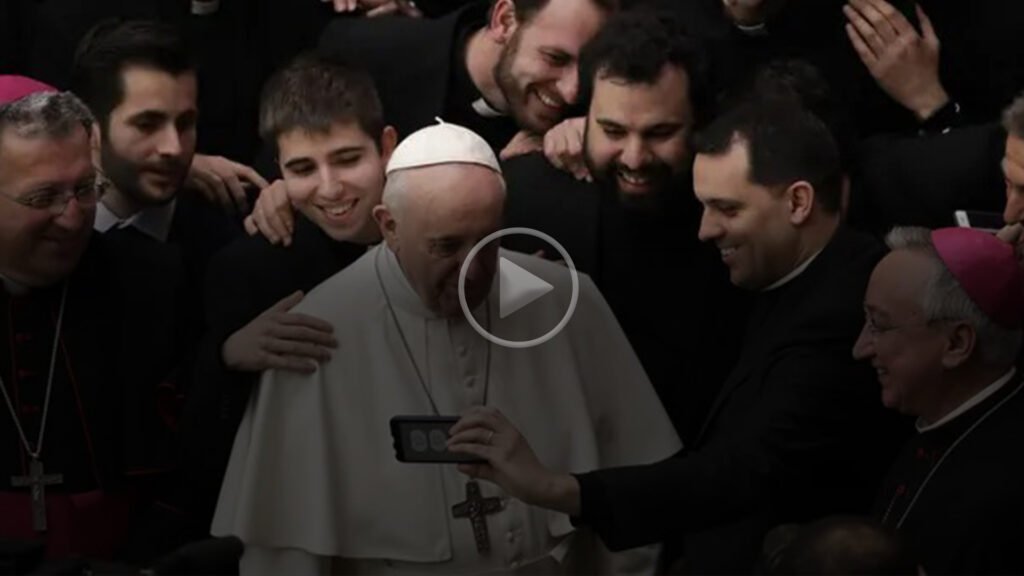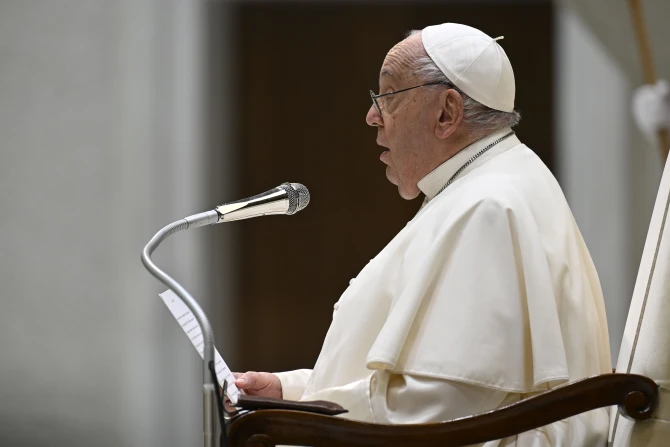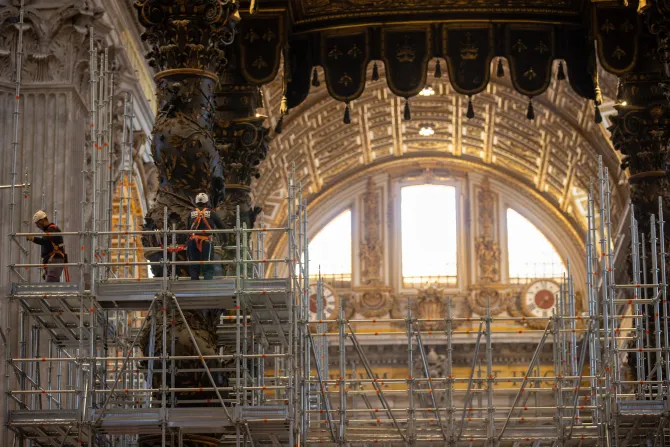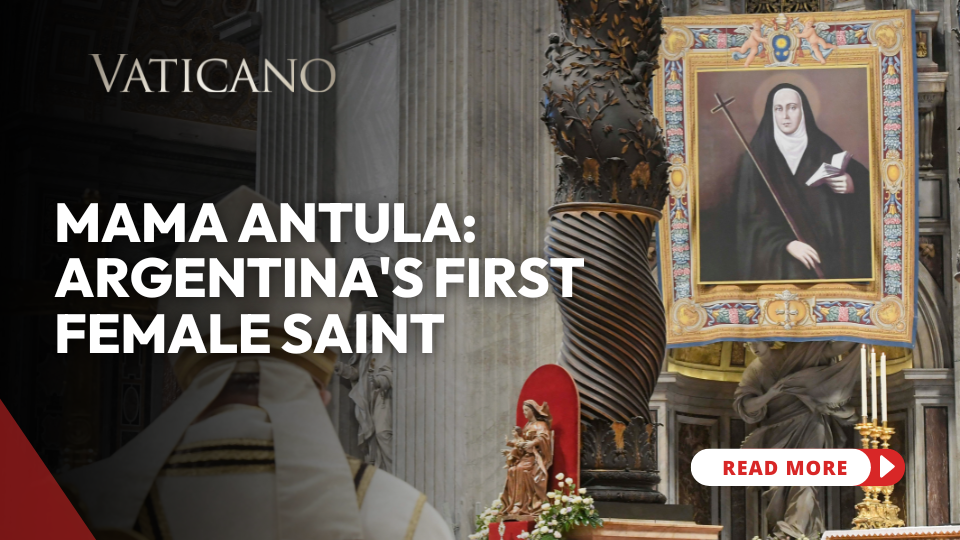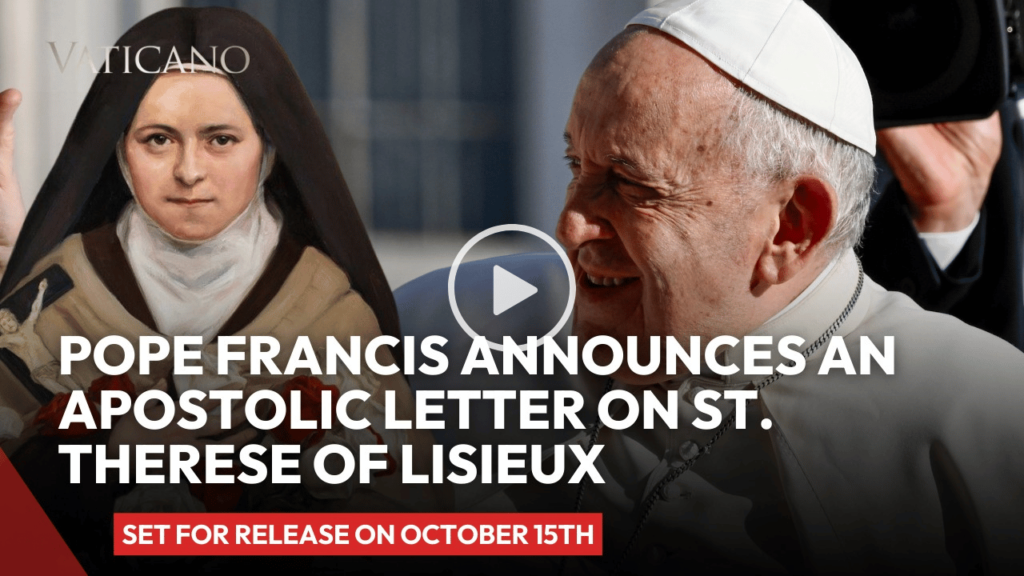St. Ferdinand Church, located in the historic heart of Naples, Italy, was the scene of an event that many are already calling miraculous, attributed to the intercession of St. Charbel, a Lebanese hermit, devotion to whom has transcended borders.
SIGN UP FOR OUR NEWSLETTER HERE
On July 24, in the context of his liturgical memorial, Monsignor Pasquale Silvestri, parish priest at the Neapolitan church, celebrated a Mass in honor of the saint attended by more than 500 people, many of them ill.
At the end of the Eucharist, the priest proceeded to anoint the faithful who approached the altar with blessed oil — sent especially for the occasion by the Maronite Curia in Rome. It was then that something unexpected happened.
‘I couldn’t believe what I was seeing’
“I didn’t imagine there would be so many people, so there came a time when the jar was almost empty, and I was afraid I wouldn’t be able to satisfy everyone,” the priest explained in a letter published July 27 and addressed to Father Elias Hamhoury, former postulator of the cause for canonization of St. Charbel.
However, he managed to anoint each sick person until the jar was empty. “When I finished,” he added, “I closed the jar and put it back in its case. But when I put it back in the safe, I realized it was full again. I couldn’t believe what I was seeing.”
When contacted by ACI Prensa, CNA’s Spanish-language news partner, Silvestri confirmed the events: “I was very surprised, because the jar was empty. In fact, I was afraid because there wouldn’t be enough to anoint everyone, and I turned the jar upside down several times” to get the last few drops.
Upon realizing that the vessel was indeed full again and that it “weighed more than before,” the priest approached the altar to tell the faithful what had happened: “Everyone applauded when they saw it.”
“I’m not a miracle worker, absolutely not, but in this case there was a production of matter; this is a very serious thing,” he emphasized. Given what happened, he assured he acted in accordance with canon law: “When one learns of a miracle, it must be communicated to the saint’s postulator.”
The aroma of the cedars of Lebanon
The next day, July 25, a group of Lebanese pilgrims arrived at the church. “They asked me if they could smell the oil, and when they did, they assured me it gave off the aroma of the cedars of Lebanon,” one of the symbols of St. Charbel’s homeland. “The oil is fragrant, something that seems impossible,” the Neapolitan priest pointed out.
St. Charbel, whose original name was Youssef Antoun, was born May 8, 1828, in Beqaa-Kafra, a village near the famous “Cedars of God,” one of the last natural reserves of these 1,000-year-old trees that in ancient times covered much of the Lebanese mountains.
“The bottle is safely stored away and at the disposal of the authorities, in case anyone wants to come and inquire and study the contents,” Silvestri added.
The beginning of a deep devotion
The priest told ACI Prensa that his devotion to the saint began almost by chance. “I didn’t know him; I heard about him recently, and I really liked his story. So I put up a picture in my church out of devotion,” he explained.

Although he assured that he has never “believed in dreams,” he shared — still amazed — a personal anecdote: “When I put up this picture, one night I dreamed that St. Charbel was looking at me and was laughing. This really struck me because the photo of St. Charbel is always that of a very serious man, but he was smiling at me.”
Since that providential episode, he decided to dedicate the Masses on the last Friday of June and July to the Lebanese saint.
Healing from serious illnesses
It was on July 24, a few hours before the “miracle” of the oil, when a young woman from the parish, about 20 years old, approached him. “She told me that that morning she had been cured of a breast tumor thanks to St. Charbel. It was completely clear, and the doctors thought it would be impossible.”
“That happened on the morning of the 24th, and in the afternoon an impressive number of people came to Mass. We weren’t prepared; in fact, we ran out of sacred hosts. And then what happened happened,” he recalled.
Since then, he said, many faithful have shared testimonies of physical or spiritual healing after participating in the Mass. “I’ve received about five or six similar accounts, and I’ve asked them to write them all down.”
The priest emphasized that “miracles are recounted in the Gospel and in the word of God.” For Silvestri, what happened in his church “is a confirmation of what we already know.”
A bridge between East and West
St. Charbel is known for obtaining miracles from God not only for Catholics but also for Muslims and followers of other religions. The Catholic Church has recorded and investigated thousands of miracles attributed to his intercession.
In fact, even during his lifetime, he enjoyed a notable reputation for miraculous healings among those who came to him for help.
The Lebanese saint, a priest and hermit monk of the Maronite rite, has become a spiritual bridge between East and West. He died on Dec. 24, 1898. He was beatified by Pope Paul VI on Dec. 5, 1965, and canonized by the same pontiff on Oct. 9, 1977.
ACI Prensa contacted the Italian Bishops’ Conference to learn its position on the matter but did not receive a response by the time of publication.
This story was first published by ACI Prensa, CNA’s Spanish-language news partner. It has been translated and adapted by CNA.


